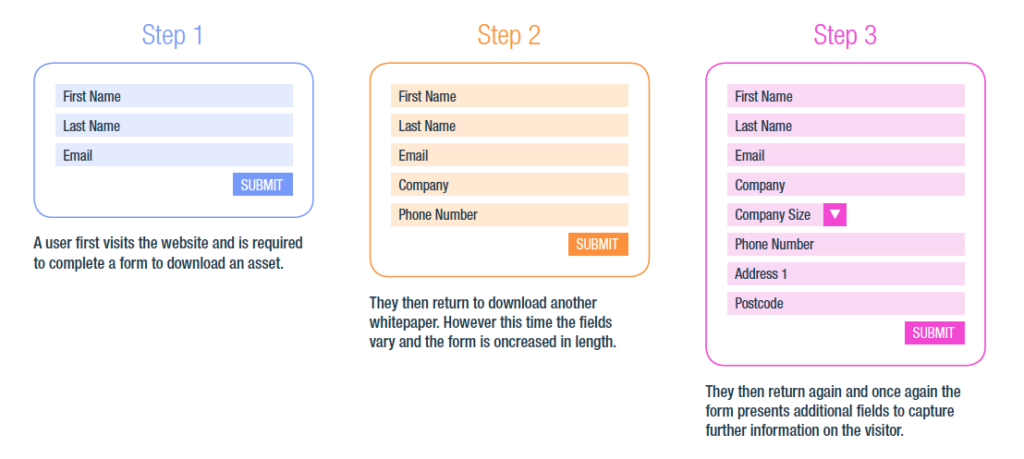What is progressive profiling?
A technical definition is the process for incrementally gaining additional data on a contact through additional form submissions. This usually occurs in exchange for value, passing through a form to access some gated content.
Put simply, the more information a prospect accesses on your site (usually behind forms), the more data you build up on them.
Marketing Automation platforms have long had this functionality, however actual execution can vary significantly. This in turn has led to a confusion on what progressive profiling is and how it actually works.
This article will give you a comprehensive overview, dispel some common misconceptions and hopefully set you on your path enhancing your gating experience and conversion rates.
A progressive profiling example

Why is progressive profiling useful?
First and foremost, it should be seen as a benefit to the user – not your business. It should be viewed as an opportunity to shorten forms and lower the data requirement at early levels of engagement. Every field on a form is effectively a higher barrier for a user/prospect to complete that form, each field increases drop off rate which means that users do not access what they originally intended (= bad for the user) and ultimately you do not have any contact details to encourage future engagement (= bad for your business).
By asking for less fields and then offering great value in your content, users will begin to trust you and you can then facilitate future engagements more easily. Why gate at all or only have ‘low’ gates. Well, if you do not increase data on contacts then subsequent follow-up will not be possible. This could also harm demand creation activities and not be aligned to sales expectations with SLAs.
How do I deploy progressive profiling?
Deployment of progressive profiling is most commonly associated with Marketing Automation platforms such as Eloqua, Marketo and Hubspot.
When planning progressive profiling, there are three common ways it can be deployed:
- Content value – Perceived value of the content
- Number of engagements – Volume of previous engagements of the user
- Dynamic profiling – Different fields based on contact data
All of these methods have benefits and potential drawbacks for you as a business; there is no one size fits all. In many instances it is also desirable to have a strategy with a combination of the above methods.
You can find out about each one of these in details in The Ultimate Guide to Progressive Profiling.
